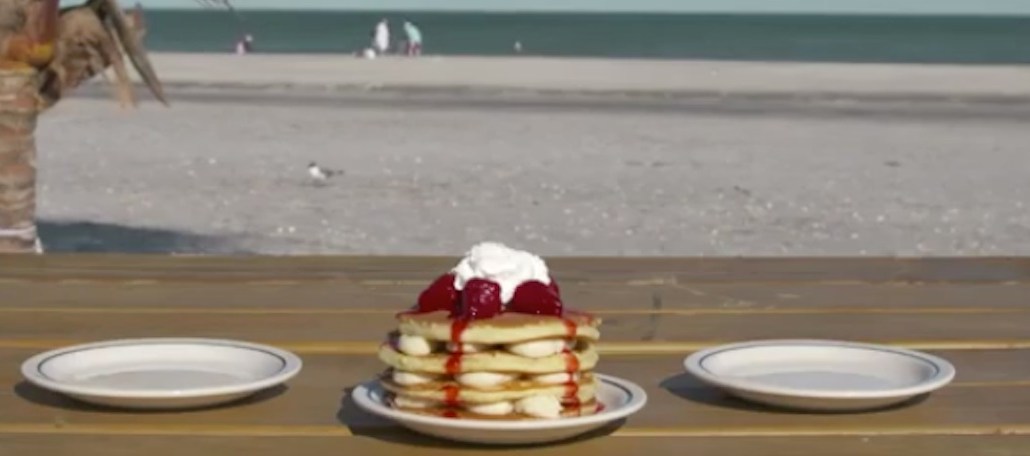‘We are a lifestyle brand’: How IHOP’s social media strategy stacks up

On June 9, IHOP ran its first series of Facebook Live videos to promote its new range of “Paradise Pancakes.” The three videos were nothing more than a shot of pancakes sitting on a table at a beach. Yet together, they amassed over 385,000 video views with people watching over 171,000 minutes, quickly becoming IHOP’s highest-performing social video effort to date.
“It was deliberate use of a great new content forum that was clever, immersive and sticky,” said Kirk Thompson, svp of marketing at IHOP. “It drove attention to the pancakes but also allowed us to showcase our brand voice, enabling us to engage and interact with our audience.”
It didn’t stop there. One of the moments during the live stream that piqued fans’ interest the most was when a man with a beard popped into the frame to quickly take a bite of one of the pancakes before swiftly disappearing. IHOP brought back the “Beard Guy” in a 360 photo it posted on Facebook on June 16, which itself has garnered over 3,000 reactions.
IHOP’s most recent efforts tie in with the brand’s overarching social media strategy, said Thompson, which is to constantly try to be “in the right place and the right conversations in the right manner.” This wasn’t always the case, said Thompson, with social being merely an afterthought to traditional channels like print, radio and television. But within the last year and a half, IHOP has been quick to embrace emerging social tools such as Facebook Live and 360, while others have taken more of a wait-and-see approach.
On National Pancake Day in March, for instance, the brand set up a social war room in its agency MRM//McCann’s New York headquarters, monitoring trends throughout the day on social media and creating real-time content, like this doge-inspired pancake meme, in response. And earlier this year, when Snapchat introduced sponsored geofilters, IHOP was one of the first brands on board, targeting customers within IHOP restaurants with IHOP-themed overlays on the platform. In January, it used the hashtags #Panuary and #Entry on Instagram to encourage pancake lovers to compete in a pancake-eating competition. It also commissioned pancake artist Nathan Shields to turn fan photos into real-time pancake portraits on Twitter.
While IHOP is happy to engage with audiences and increase the number of its followers on social, ultimately it’s looking to sell pancakes. It might be working: IHOP’s total sales were up 8.1 percent over the past year while competitor Denny’s was up just 4.1 percent, according to Technomic. To sustain that growth, it will keep looking to social media as a way to insert itself into people’s lives on a daily basis, said Thompson.
“I would say that we are a lifestyle brand considering we’re a 58-year-old brand that’s been a part of people’s breakfast rituals and special moments for decades,” he said. “It is both healthy and important for us to remain a dynamic part of their lifestyles, even though the term may be overused today.”
More in Marketing

With the rise of the chief AI officer, it’s time to examine ‘czar’ culture
Even if it’s a familiar pattern — hot new thing, new C-Suite exec to tackle said thing, a few years go by and that C-Suite position no longer exists as everyone is now doing said thing (or it was a fad that has since faded away) — does it make sense for businesses to continue to appoint new czars with every new trend?

Why Cava’s bid for brand awareness means prioritizing streaming ads
Fast-casual restaurant chain Cava has been in growth mode over the past year and is leaning into streaming ads in an effort to boost brand awareness.

A history of middle manager stress: The Return podcast, season 3, episode 1
In episode one, McKinsey partner Emily Field tells us more about why middle management is critically important to the workforce.





